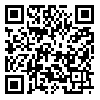Volume 14, Issue 2 (March & April 2023)
BCN 2023, 14(2): 213-224 |
Back to browse issues page
Download citation:
BibTeX | RIS | EndNote | Medlars | ProCite | Reference Manager | RefWorks
Send citation to:



BibTeX | RIS | EndNote | Medlars | ProCite | Reference Manager | RefWorks
Send citation to:
Rezaei E, Shalbaf A. Classification of Right/Left Hand Motor Imagery by Effective Connectivity Based on Transfer Entropy in Electroencephalogram Signal. BCN 2023; 14 (2) :213-224
URL: http://bcn.iums.ac.ir/article-1-2138-en.html
URL: http://bcn.iums.ac.ir/article-1-2138-en.html
1- Department of Medical Physics and Biomedical Engineering, School of Medicine, Shahid Beheshti University of Medical Sciences, Tehran, Iran.
Abstract:
Introduction: The right and left-hand motor imagery (MI) analysis based on the electroencephalogram (EEG) signal can directly link the central nervous system to a computer or a device. This study aims to identify a set of robust and nonlinear effective brain connectivity features quantified by transfer entropy (TE) to characterize the relationship between brain regions from EEG signals and create a hierarchical feature selection and classification for discrimination of right and lefthand MI tasks.
Methods: TE is calculated among EEG channels as the distinctive, effective connectivity features. TE is a model-free method that can measure nonlinear effective connectivity and analyze multivariate dependent directed information flow among neural EEG channels. Then four feature subset selection methods namely relief-F, Fisher, Laplacian, and local learningbased clustering (LLCFS) algorithms are used to choose the most significant effective connectivity features and reduce redundant information. Finally, support vector machine (SVM) and linear discriminant analysis (LDA) methods are used for classification.
Results: Results show that the best performance in 29 healthy subjects and 60 trials is achieved using the TE method via the Relief-F algorithm as feature selection and support vector machine (SVM) classification with 91.02% accuracy.
Conclusion: The TE index and a hierarchical feature selection and classification can be useful for the discrimination of right- and left-hand MI tasks from multichannel EEG signals.
Methods: TE is calculated among EEG channels as the distinctive, effective connectivity features. TE is a model-free method that can measure nonlinear effective connectivity and analyze multivariate dependent directed information flow among neural EEG channels. Then four feature subset selection methods namely relief-F, Fisher, Laplacian, and local learningbased clustering (LLCFS) algorithms are used to choose the most significant effective connectivity features and reduce redundant information. Finally, support vector machine (SVM) and linear discriminant analysis (LDA) methods are used for classification.
Results: Results show that the best performance in 29 healthy subjects and 60 trials is achieved using the TE method via the Relief-F algorithm as feature selection and support vector machine (SVM) classification with 91.02% accuracy.
Conclusion: The TE index and a hierarchical feature selection and classification can be useful for the discrimination of right- and left-hand MI tasks from multichannel EEG signals.
Type of Study: Original |
Subject:
Computational Neuroscience
Received: 2021/04/8 | Accepted: 2021/09/18 | Published: 2023/03/1
Received: 2021/04/8 | Accepted: 2021/09/18 | Published: 2023/03/1
Send email to the article author
| Rights and permissions | |
 |
This work is licensed under a Creative Commons Attribution-NonCommercial 4.0 International License. |








